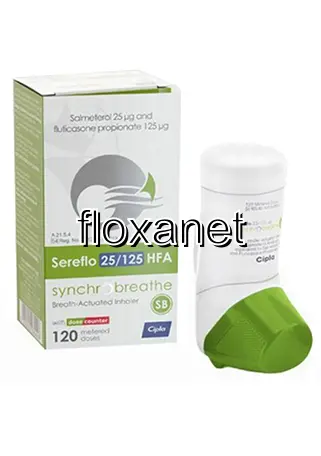| Package | Dosage | Price | Price per Dose | |
|---|---|---|---|---|
| Dosage: 25/50mcg | ||||
| 6 inhaler | 25/50mcg | NZD520.67 | NZD86.78 | |
| 3 inhaler | 25/50mcg | NZD298.89 | NZD99.63 | |
| 1 inhaler | 25/50mcg | NZD115.69 | NZD115.69 | |
| Dosage: 25/125mcg | ||||
| 6 inhaler | 25/125mcg | NZD578.53 | NZD96.42 | |
| 3 inhaler | 25/125mcg | NZD332.64 | NZD110.89 | |
| 1 inhaler | 25/125mcg | NZD127.74 | NZD127.74 | |
| Dosage: 25/250mcg | ||||
| 6 inhaler | 25/250mcg | NZD899.14 | NZD149.84 | |
| 3 inhaler | 25/250mcg | NZD494.15 | NZD164.72 | |
| 1 inhaler | 25/250mcg | NZD188.00 | NZD188.00 | |

Fluticasone / Salmeterol Description
Overview of Fluticasone / Salmeterol
Fluticasone / Salmeterol is a combination medication used primarily to manage asthma and chronic obstructive pulmonary disease (COPD). It combines two active ingredients that work together to improve breathing and reduce symptoms. Fluticasone is a corticosteroid which helps to reduce inflammation in the airways. Salmeterol is a long-acting beta-agonist that relaxes the muscles around the airways, making breathing easier. Together, they provide a comprehensive approach to controlling respiratory conditions that require both anti-inflammatory and bronchodilator effects.
How It Works
The corticosteroid component, fluticasone, targets inflammation directly. It decreases the production of chemicals in the lungs that cause swelling, redness, and mucus buildup. This action helps to prevent asthma attacks and reduce the frequency of worsening COPD symptoms. Salmeterol, on the other hand, works by stimulating beta-2 receptors in the smooth muscle lining the airways. This stimulation causes muscle relaxation, which widens the air passages. The combination ensures that patients experience fewer episodes of breathlessness, coughing, and wheezing.
Usage and Dosage
Fluticasone / Salmeterol is typically administered via an inhaler. The exact dosage and frequency depend on the patient's condition and medical history. It’s important to follow the prescribing instructions carefully. Usually, the medication is used twice daily, once in the morning and once in the evening. Patients should not increase or decrease the dose without medical consultation. Proper inhaler technique is critical for effective delivery of the medication. Regular use as prescribed helps maintain consistent control over symptoms and reduces the risk of exacerbations.
Possible Benefits
Many users report significant improvement in their breathing and reduction of asthma or COPD flare-ups after starting this medication. It often helps improve overall lung function and enhances quality of life. Due to its long-acting components, it provides sustained symptom control over 24 hours. This can reduce the need for rescue inhalers or emergency treatments. Also, consistent use can lead to fewer hospital visits related to respiratory crises.
Potential Side Effects
Like all medications, Fluticasone / Salmeterol may cause side effects. Some common issues include throat irritation, cough, headache, or hoarseness. Less frequently, patients may experience increased heart rate, tremors, or muscle cramps due to salmeterol. Long-term steroid use can sometimes lead to oral thrush, so rinsing the mouth after inhalation is recommended. It is crucial to monitor for any unusual symptoms and report them to a healthcare provider promptly.
Precautions and Considerations
This medication should be used under medical supervision. It may not be suitable for individuals with certain conditions, such as heart problems or hypersensitivity to the ingredients. Patients with infections or tuberculosis should inform their doctor before starting therapy. It is also important not to abruptly stop the medication, as this may worsen symptoms. Regular follow-ups are necessary to assess the effectiveness and make any necessary adjustments.
Conclusion
Fluticasone / Salmeterol offers a potent combination therapy for managing chronic respiratory conditions. Its dual action addresses both inflammation and airway constriction, leading to better symptom control. Proper use, adherence to dosage, and medical oversight are key to maximizing benefits and minimizing risks. Overall, it remains a valuable option for many patients seeking improved breathing and quality of life. Regular communication with healthcare providers helps ensure the medication continues to meet individual needs effectively.